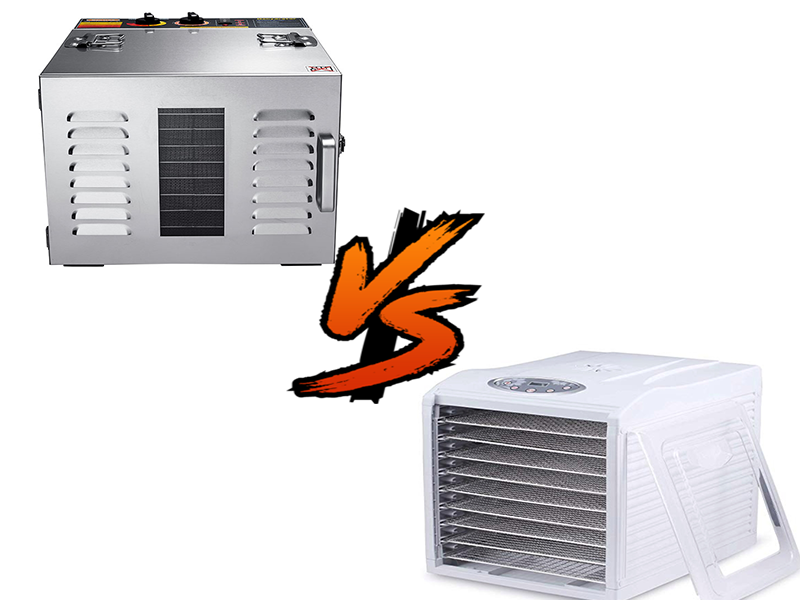A hot topic in when picking the best food dehydrator is the question of the potential health risks associated with the presence of plastics in food dehydrators, and the phenomenon of ‘off-gassing’.
Even food-grade BPA-free plastics are not considered safe enough by many people. For this reason, they would prefer to have a dehydrator, or at least drying racks, made of food-grade stainless steel rather than plastic.
Unfortunately, the price of food dehydrators tends to increase with their stainless steel content, and all stainless steel dehydrators such as TSM, STX, and Raw Rutes products, cost several hundred dollars.
What’s The Difference?
Modern plastics used in food contact surfaces are usually BPA-free, with non-food-contact components made from food-safe polycarbonate, which is more rigid. As an example, Excalibur Dehydrators use only BPA-free polypropylene #5 for their food trays and FDA-approved polycarbonate for their dehydrator cabinets.
Plastic components can be molded to a wide variety of forms, allowing the production of appliances in a number of styles and shapes.
This is most clearly seen in the spectrum of stackable vertical airflow dehydrators tray shapes to be found, including, square, rectangular, and oblong. For example, NESCO supplies both round and square shaped food dehydrators. Added variation can be found in the design of the fan – heater control unit, whether it be base-mounted or lid-mounted, digital or analog, rounded or angled.
Plastics are used for both stackable vertical airflow food dehydrators such as the Waring Pro DHR30 and the Presto 06301, and cabinet-style horizontal airflow food dehydrators such as the Tribest Sedona Express and the Excalibur 3948CDB.
Stainless steel food dehydrators are generally fabricated from 22 gauge 304 food-grade stainless steel, which can be used for both the body and the trays. Chrome-plated metal is not considered as good quality or as safe as stainless steel (which is an alloy that contains at least 10.5% chrome), as there is concern that the chrome plating may flake off into food and also expose the metal below to corrosion.
Stainless steel food dehydrators are all cabinet shaped, with variety being found in the details, such as placing of controls and vents, and door styles. Examples range from the functional appearance of the STX International and TSM stainless steel dehydrators to the ultra-modern looking Raw Rutes stainless steel dehydrators. These details can improve the visual appeal of the product, but on the whole they tend to be similar in appearance and vary mainly in size.
Post time: Jun-29-2022


